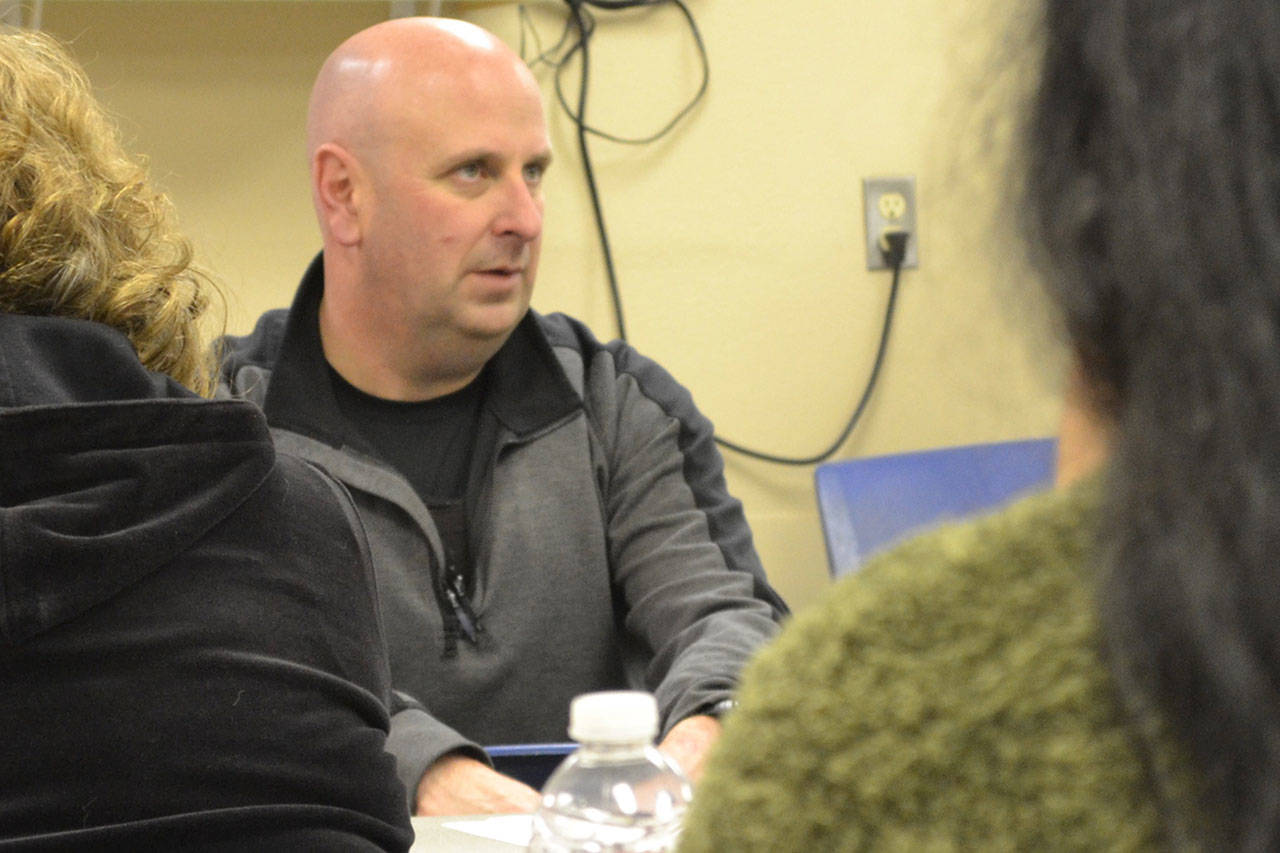Last in a series
MARYSVILLE – Cmdr. Mark Thomas has seen the Marysville SWAT team evolve in its 18-year lifespan. It started as an “entry team” in 1999.
“It was grab a shield, grab a ram,” Thomas said at the final Marysville Police Citizens Academy. He admitted that just “grabbing guys was not a safe way to do this.”
The process was “dynamic entry – speed, aggression, surprise,” he said, adding they could search an almost 2,000-square-foot house in 40 seconds.
When Stacey Dreyer joined the squad, he suggested a “slower, deliberate” process. It became a tactical team. It would take 45 minutes to search that same house. But they would cover all the angles and each others’ backs to make sure everyone got out safely.
“How much dope is worth dying over?” Dreyer asked.
Since they were now tactical, they could take on other missions. They were involved in tracking the “Barefoot Bandit” three times. Once they almost caught him. He was inside a shed that was locked up before it was searched.
“We could have been heroes,” Thomas said.
When the team became qualified in “hostage rescue,” it became part of SWAT. The team got some new toys, Thomas said.
One is the Bad-guy Observation Bot, or BOB the $21,000 robot. It can be sent into dangerous situations. Thomas worries one day it might get shot up.
“Better the robot than us,” he said.
SWAT used to use something similar to a bread truck for its vehicle, then it got an armored car. In May, Thomas will be flying back east to drive back a new armor-protected Bearcat that cost $216,000 – all of it confiscated from criminals.
Armor that SWAT wears that can withstand rifle shots cost $600 each, but is only good for five years.
Thomas would like to get a drone that costs $28,000 that can detect body heat, which would help in searches. Another thing they don’t have is a helicopter. But they can use one Homeland Security operates. It can provide live intelligence from three miles away. The Blackhawk can intimidate criminals so they “give up,” which is law enforcement’s ultimate goal.
Thomas said he’s only gone to the wrong house twice in 25 years, or about 300 busts. Once, a new family had just moved in over the weekend. The other was just a few doors away.
The copter also did some damage before; the wind it blew up tore shingles off a church’s roof.
Coordinator Greg Kanehen and chaplain Tom Albright talked about the Crisis Support Team.
Not only does it support police and fire employees, it also supports victims of crisis.
Albright said they are called in to support families when a death occurs.
“Just help the family get through,” he said. “I’ve seen absolute hysteria to near paralysis” in responses from families.
A lot of times people ask, “What should I be doing?” he said. “There is no normal” he responds.
Albright said if a medical examiner is coming for the body, a fast response is 90 minutes. If the body is going to be picked up by a funeral home, it can take up to five hours. During that time, chaplains are there to answer questions.
Both worked on the Oso landslide three years ago. Albright said he was the first chaplain at the shelter at the high school, and he listened as families tried to get in touch with loved ones. On the first night, 54 people were reported missing – 43 ended up dying. “Death notifications were good news because it provided finality for the families,” Albright said.
At both that tragedy, and the shooting at Marysville-Pilchuck High School, Kanehen said chaplain “wannabees” showed up. They were politely turned away. Kanehan said they go through 200 hours of training, and they don’t want people just trying to help because they likely wouldn’t handle the situation properly. “We were blasted with too many people,” he said, adding now there is a protocol established for such emergencies.
The eight-week academy ended with some scenarios.
•A student playing officer was surprised when during a routine traffic stop a man jumped out and fired two shots before the officer got a shot off. Dreyer said police train for that by having a hand on their gun at such times so they can react quicker. He also advised the officer to walk behind the car rather than to the side to have cover. The officer did injure the shooter. Dreyer said only 25 percent of gunshot wounds are fatal.
•Another scenario involved a suspicious person trespassing at a business. The suspect aggressively went toward the officer, who said he came close to shooting him. Overall, Dreyer said, “Distance is your friend. A property crime is not worth getting hurt. Wait for backup.”
•The final scenario was similar, except the suspicious person snuck up on the student-officer and shot at him.
Dreyer said when using a flashlight people can have tunnel vision and lose peripheral sight. “Were focused on the mission and don’t see what we should see.”


